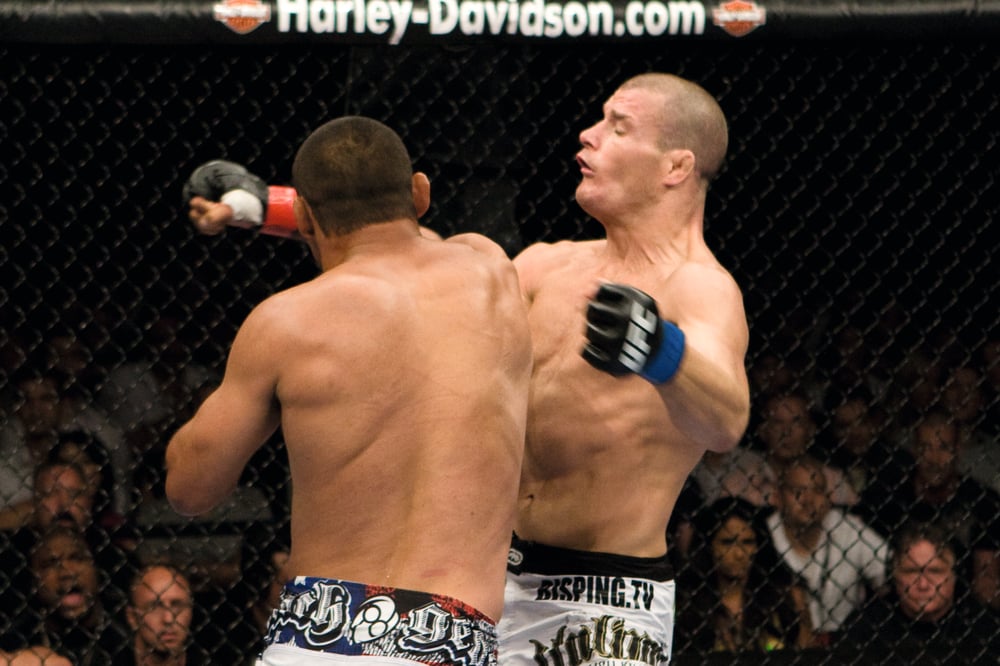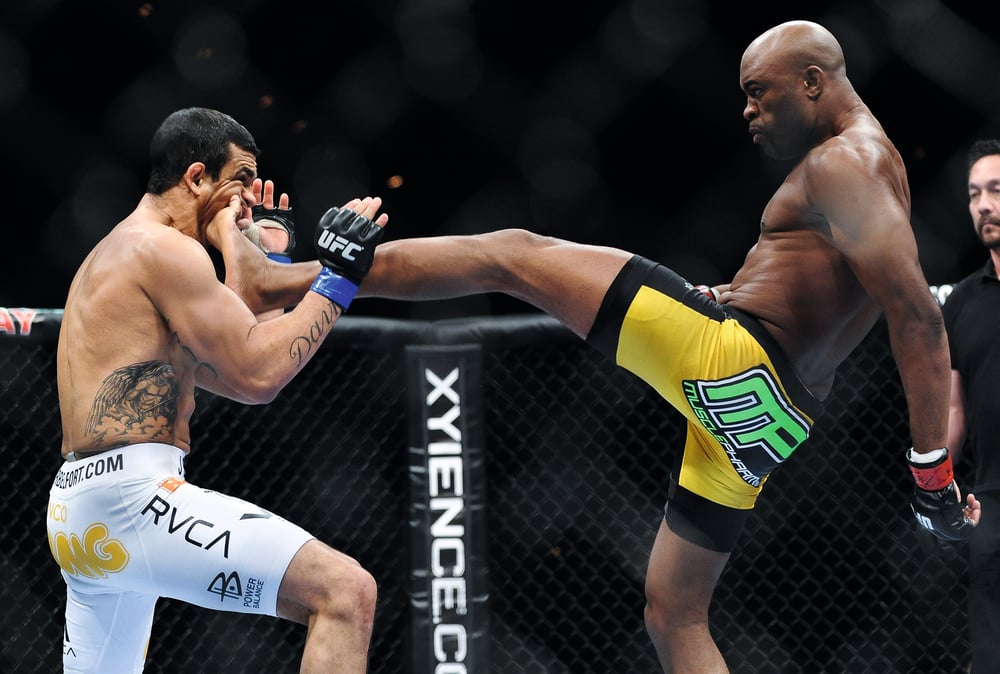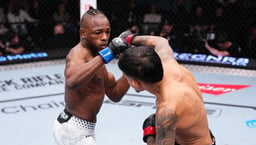
Issue 215
March 2025
Ray Klerck kicks open the statical playbook to uncover the magic lurking behind the fight-finishing punches that put the lights out.
A KO is nature’s purest expression of victory. In a sport where almost everything is contested, it is the one truth that requires zero explanation. When lights go out. Arguments end. A crowd erupts. The commentary box braces for impact. One poor soul wakes up to a new reality. But what separates the reset button punches from those that just shave a little bark off someone's mug? More importantly, how can fighters land or avoid these fight-ending blows with surgical precision? Turns out, there’s plenty of raw data on the subject, which science has number-crunched for actionable answers. Drawing from key research on striking momentum, victory patterns, and finishing sequences in combat sports, we’re breaking down what really causes knockouts in MMA and how this impacts fight careers.
THE MYTH OF THE FIRST STRIKE
Approximately 20% of all KOs happen in the first minute of a round. Does this mean that he who hits first - wins? No. It’s a delusional old saying and one you might want to take with a grain of smoked bath salts. A study analyzing 104 UFC fights found that landing the first strike doesn’t necessarily dictate the outcome unless it’s an ultra-crispy opening shot that instantly creates a power outage. Think: Jorge Masvidal’s flying knee against Ben Askren. Interestingly, fighters who attack first to be part of that 20% tend to go on to strike more throughout the fight, but only if their opening shot is blocked, especially in the third round. In other words, missing or getting blocked in the first exchange makes fighters throw more, not less, especially in later rounds. This suggests that when that first-round aggression gets access denied via a block, then the strike volume increases, perhaps as a way to recover a fighter’s confidence. So, while leading the dance is always a worthwhile strategy to chase the first-round KO, it doesn’t guarantee intentions will manifest into reality.

WHAT ACTUALLY FINISHES FIGHTS?
If you want a short-term win and a long-term career, avoid decisions like they’re a gas station sushi platter that’s on special. A large-scale study in Translational Sports Medicine looked at 280 combat sports athletes and found that winning by knockout or submission is the most reliable way to build a dominant career record. Err. They got a grant for that? Surprisingly, yes. In striking-based sports like MMA, Muay Thai, and boxing, the data was clear: KO-heavy fighters have longer, more successful careers than those who grind out decisions. But the real kicker? Statistically speaking, losing via knockout is far more damaging to long-term success than losing on points. Whether that’s a psychological or physiological outcome, it’s hard to tell, but going the distance versus taking an involuntary nap are two different pathways.
For grapplers, the results flipped. Losing by submission or pin was worse for career longevity than losing by points, likely because tapping out signals a fundamental skill gap, whereas losing on points might just mean someone played the clock better. Here’s the kind of weird part. In wrestling and judo, athletes who lost more by points actually had better overall career records. This finding suggests that in grappling-heavy sports, risk management trumps all. A slow, tactical loss keeps you in the game, while getting tapped or thrown out of the mat can derail your career. In other words, survival in the name of a decision-based win isn’t just strategy. It’s a career extender.
THE MAGIC PUNCH
If knockouts are the ultimate art form, the rear straight and hooks are the masterstrokes that bring glory to the canvas. A 2024 study in the International Journal of Sports Science & Coaching wanted to dissect the exact anatomy of a KO, so they analyzed 271 UFC fights from 2020 to 2022. There was a clear, clean winner: the rear straight thrown from the dominant hand in a fighter’s stance. This KO setting sneaked into first place by a whisker. The rear straight (29.2%), front hook (26.9%), and rear hook (23.9%) were the other three most common fight-ending punches. But here’s where it gets interesting. Stance and foot positioning played a considerable role in determining what kind of punch sealed the deal. The rear straight was the go-to finishing blow when opposing fighters stood in the same stance, so both were orthodox. But when facing opposite stances (southpaw vs orthodox), the rear hook took over as the dominant knockout weapon. This finding suggests that outside foot position opens the lane for a clean kill shot, while inside positioning might clog up the angles. Bottom line? If you want to add more KOs to your highlight reel resume, work on landing rear straights in orthodox vs. orthodox matchups and rear hooks when going southpaw vs. orthodox. Numbers don’t lie.

KNOCKOUT LOOKS
Some fighters really do look as if they can produce KOs on command. This is something we can almost subconsciously see just by looking at them. A research paper told you what you already know, finding that larger UFC athletes win more by knockout. And this was supported by other sources that suggest that light heavyweights and welterweights are most likely to get fractures and lengthy medical suspensions. The UFC’s heavyweight division has the highest percentage of TKOs, accounting for 49% of fights ending in TKO. But what if you’re on the receiving end? Well, a Spanish studysuggests that some fighters are naturally more susceptible to knockouts, but getting KO’d multiple times doesn’t necessarily make a fighter’s chin worse over time. The study also debunks the idea that jaw toughness can be trained. Anyone with slow reactions to head strikes is more likely to get knocked out, making defensive skills and awareness far more critical than trying to condition a chin. Take home message: not everyone is built with an iron chin like Marvin Vettori.

HOW TO USE THE STATS
We love a KO, but that’s because it’s relatively rare, with 28 - 46% of matches ending via knockout or TKO. Those who lost by KO took an average of 18.5 head strikes in the final 30 seconds before the stoppage. At the time of this research, KO rates in MMA are higher than in boxing and wrestling. If you’re a fan or fighter, you’ll want to play those odds. Anyone swinging for points hopes three people in suits like their vibe more than the other guy’s. It’s a gamble. The UFC doesn’t want decisions, or they wouldn’t dangle Fight of the Night bonuses. High-volume strikers need a backup plan for when the judges tap out mentally for a second and mis-score a fight. The research makes it clear: finishing fights matters. It creates shorter bouts, longer careers, and happier fans. That means punching and kicking as if your rent depends on it, is a skill worth mastering. And don’t think you can coast into the later rounds without gas in the tank. The statistics suggest striking output often increases in round three when fighters get blocked early in the fight. That’s right. Getting denied doesn’t discourage anyone. It just makes them hungrier to throw more. The game remains the same: KO or be KO’d. The circle of life will always remain MMA’s ultimate plot twist that you never want to see coming.










